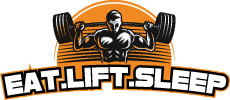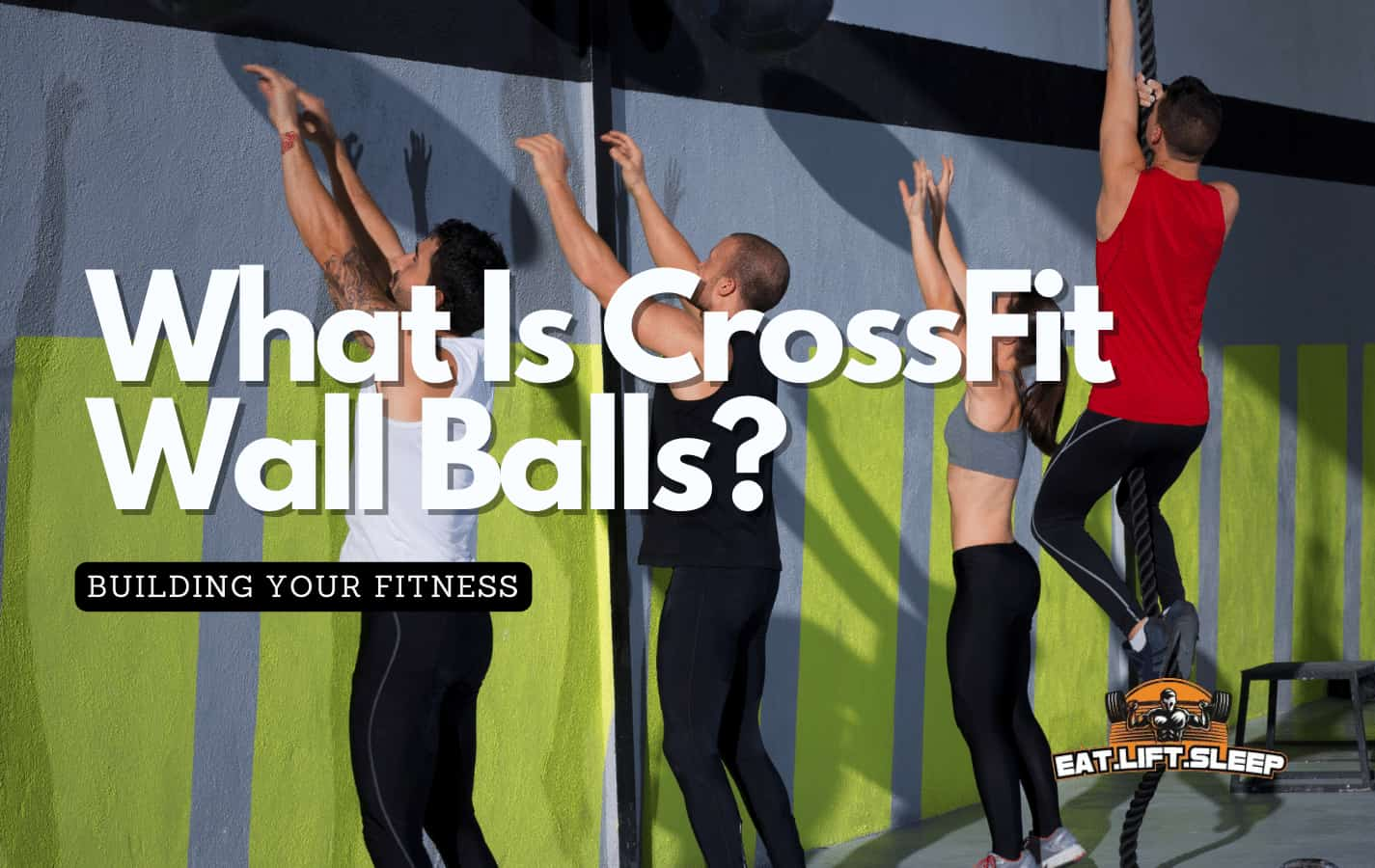Are you looking to add a fun and challenging exercise to your CrossFit routine? Look no further than the wall ball. This simple yet effective movement is a staple in many CrossFit workouts and for good reason.
Wall balls provide a full-body workout that targets multiple muscle groups while also improving cardiovascular endurance. At its core, a wall ball involves throwing a weighted ball against a target on the wall, then catching it and repeating the movement.
While it may seem straightforward, proper form and technique are essential to getting the most out of this exercise. In this article, we’ll dive into everything you need to know about wall balls in CrossFit, including their benefits, how to perform them correctly, common mistakes to avoid, and some great workouts featuring this movement.
So grab your favorite gym buddy and let’s get started!
What are Wall Balls in CrossFit?
You’re probably wondering what this popular exercise in CrossFit involves – imagine holding a medicine ball at your chest, squatting down, and then exploding upwards while throwing the ball up towards a target above you. This is what Wall Balls in CrossFit are all about.
They are a compound movement that requires coordination, strength, and endurance. The goal of wall balls is to improve your overall fitness by challenging different muscle groups.
Variations of wall balls include changing the weight of the medicine ball or adjusting the height of the target. These variations make wall balls more challenging and can help you reach new fitness goals.
For example, using a heavier medicine ball will force you to use more strength during each rep, while raising the target will require greater explosiveness from your legs.
Muscles worked during wall balls include your quads, hamstrings, glutes, calves, core muscles (abs and lower back), shoulders and arms (biceps and triceps). Wall balls are great for building leg strength as well as developing power throughout multiple muscle groups.
Incorporating them into your workout routine can lead to significant gains in both strength and cardiovascular endurance without spending hours in the gym.
By adding Wall Balls into your CrossFit regimen regularly with varying weights or targets heights can significantly increase your overall physical fitness.
You’ll be hitting most major muscle groups while increasing cardiorespiratory capacity at once – making it one of the best exercises for general conditioning out there!
Benefits of Wall Balls
The advantages of incorporating wall balls into your routine extend beyond just physical gains, making it a valuable addition to any workout regimen. This exercise requires you to throw a medicine ball against a wall and catch it as it comes back down.
Here are some benefits you can expect from doing wall balls:
- Muscle activation: Wall balls engage multiple muscle groups including the legs, glutes, core, shoulders, and arms. The explosive movement required for each repetition activates these muscles in a way that’s similar to other compound exercises like squats or deadlifts.
- Cardiovascular endurance: Wall balls also require you to perform high-intensity movements for extended periods of time, which can improve your cardiovascular endurance over time. This makes them an excellent choice for those looking to add more conditioning work to their routines.
Incorporating wall balls into your workout routine can help improve your overall fitness level by engaging multiple muscle groups and improving cardiovascular endurance.
Additionally, this exercise provides functional benefits that translate well outside of the gym, such as improved coordination and reaction time.
So next time you’re looking for an effective full-body workout, give wall balls a try!
Equipment Needed for Wall Balls
To get the most out of this explosive full-body workout, all you need is a medicine ball and a sturdy wall that can handle the impact – it’s like having your own personal cannon that fires up your muscles and endurance.
The wall ball weight ranges from 6-20 pounds, giving you options to increase or decrease resistance as needed.
There are also variations in wall ball exercises that can target different muscle groups. For example, holding the medicine ball at chest height and squatting down before launching it upward targets your legs, glutes, shoulders, and core. Alternatively, holding the medicine ball overhead while doing squats engages your upper body more than just throwing it.
Lastly, when performing wall balls be sure to stand far enough away from the wall so that the ball reaches its full height without hitting any part of your body or face on its way back down.
It’s important to keep proper form throughout the exercise to prevent injury and maximize results. So grab a medicine ball and find a sturdy wall – you’re ready for some serious crossfit action!
Proper Form and Technique
Starting Position: To start, stand facing the wall with your feet shoulder-width apart and toes pointing forward. Hold the medicine ball at chest level with both hands and elbows close to your body.
Throwing the Ball: As you squat down, keep your weight in your heels and drive up through your legs as you throw the ball at the target on the wall. Fully extend your arms and follow through with a wrist flick to add power to the throw.
Catching the Ball: Catching requires proper hand placement and timing. Keep your eyes on the ball as it comes back toward you, catch it at chest level, absorb its impact by bending your knees slightly, then quickly return to starting position for another rep.
Starting Position
Get ready to squat down low with your feet shoulder-width apart and hold a medicine ball at chest height. Before you begin the wall balls exercise, make sure that the wall ball weight is appropriate for you. The standard weight for men is 20 pounds, while women usually use 14 pounds. However, beginners can start with lighter weights to avoid injuries.
Starting position is crucial in doing wall balls. Make sure that your elbows are tucked in and your core is engaged before you start going down into a squat. Keep your back straight as you lower yourself until your hips go below parallel.
Once you reach the bottom of the squat, explode upward by driving through your heels and pushing the ball up towards the target above you. Remember to keep proper form throughout the movement to prevent common injuries such as lower back pain or knee problems.
Throwing the Ball
As you rise up from the squat, explode like a firework and toss the medicine ball towards the target with the force of a cannonball. The throwing technique is crucial to successfully completing wall balls in CrossFit. Here are some tips to help you improve your technique:
- Hold the ball at chest level with your elbows tucked in.
- Use your legs to drive upward and generate power for the throw.
As you extend your arms, release the ball at the peak of your jump. Aim for a specific spot on the target and visualize hitting it every time.
Wall balls come in different weight options, ranging from 6 lbs to 30 lbs. It’s important to choose a weight that challenges you but doesn’t compromise proper form or safety.
As you progress in skill and strength, gradually increase the weight of your ball to continue challenging yourself. With consistent practice and attention to technique, wall balls can become an effective tool for improving overall fitness and athleticism.
Catching the Ball
Now, you’re ready to catch the medicine ball like a pro, so let’s focus on your hand-eye coordination and reaction time.
Catching techniques are important in wall balls because if you miss catching the ball, it can throw off your rhythm and cause you to waste energy trying to retrieve it. The key is to keep your eyes on the ball at all times and anticipate its trajectory as it comes down towards you.
When catching the ball, extend your arms out in front of your body with your palms facing up and fingers spread apart. As the ball comes down towards you, bring your hands up towards it and catch it with both hands simultaneously.
It’s important to catch the ball softly by absorbing its weight with bent elbows rather than catching it stiff-armed which could result in injury or dropping the ball.
Practice makes perfect when developing hand-eye coordination for wall balls, so start with a lighter weighted ball until you feel comfortable enough to progress to heavier ones.
Common Mistakes to Avoid
You don’t want to make these mistakes when doing wall balls in CrossFit, or else you might not get the full benefits and progress in your fitness journey.
Here are common mistakes to avoid:
- Breathing: One mistake is holding your breath during the squat and throwing phases of the exercise. This can cause a decrease in oxygen intake, which leads to early fatigue. Remember to inhale as you lower yourself into the squat position, and exhale as you push up and throw the ball.
- Squat form: Another mistake is poor squat form, which puts unnecessary strain on your knees and back. Make sure to keep your feet shoulder-width apart, toes pointing slightly outwards, chest up, back straight, and hips pushed back as you descend into a deep squat.
- Ball trajectory: Lastly, one mistake that affects both performance and safety is incorrect ball trajectory. The ball should be thrown straight up towards a target line above you, not forward or at an angle. This ensures that it comes back down in front of you for catching.
By avoiding these common mistakes during wall balls exercise in CrossFit workouts, you can improve your endurance and strength gains while minimizing risk of injury.
Keep practicing good breathing techniques with proper squat form and correct ball trajectory for optimal results!
CrossFit Workouts Featuring Wall Balls
Partner workouts and variations of wall balls are some common mistakes to avoid in your CrossFit training. Now that you know what to look out for, it’s time to explore the different CrossFit workouts featuring wall balls. These exercises can help you build strength, endurance, and coordination.
Here are three popular CrossFit workouts featuring wall balls:
| Workout | Reps/Rounds | Equipment |
|---|---|---|
| Karen | 150 Wall Balls for Time | Medicine Ball |
| Fight Gone Bad | 3 Rounds of Max Reps: Wall Balls, Sumo Deadlift High Pulls, Box Jumps, Push Presses, Rowing Machine Calories | Medicine Ball, Kettlebell, Box Jump Platform, Barbell |
| Filthy Fifty | 50 Box Jumps, 50 Jumping Pull-Ups, 50 Kettlebell Swings, 50 Walking Lunges with Weighted Plate Overhead, 50 Knees-to-Elbows on Pull-Up Bar or Rings (or Leg Raises), 50 Push Presses with Barbell or Dumbbells (or Handstand Push-Ups), 50 Back Extensions or Good Mornings with Barbell or Weighted Plate Held at Chest Level while Lying Face Down on Mat / GHD Machine (or Superman Extensions), 50 Wall Balls for Time (10 ft Target) , and finally… Run a mile! | Medicine Ball,Kettlebells,Dumbbells,Rings,Pull-up bar,GHD machine |
As you can see from the table above there is a range of workouts that use wall balls as part of their routines. While each workout has its unique combination of equipment and reps/rounds to complete.
All feature the same basic movement – throwing a medicine ball against a target.
Incorporating these workouts into your routine will provide variety in your exercise regimen while also targeting key muscle groups such as your legs, core, and upper body.
Remember to focus on proper form and technique to avoid injury and maximize the benefits of your wall ball workouts.
Tips for Beginners
If you’re new to this type of exercise, these tips will help ensure that you start your CrossFit journey on the right foot.
One important factor to consider is the wall ball weight. As a beginner, it’s best to start with a lighter ball until you get comfortable with the movement and build up your strength. A 14-pound ball is common for women, while men often use a 20-pound ball.
Another tip for beginners is to be mindful of their training frequency. While it can be tempting to jump into CrossFit workouts every day, it’s important to give your body time to recover and avoid overtraining. Aim for two or three sessions per week at first and gradually increase as your fitness level improves.
Lastly, don’t forget about proper form when performing wall balls in CrossFit. Keep your feet shoulder-width apart and squat down until your hips are below parallel before exploding upward and throwing the ball against the wall.
Remember to keep good posture throughout the movement by keeping your chest up and core engaged.
With these tips in mind, beginners can safely and effectively incorporate wall balls into their CrossFit routine.
How Can the Renegade Row Benefit My Crossfit Workouts?
Incorporating the renegade row into your Crossfit workouts can bring immense benefits. By embracing the renegade row, you engage multiple muscle groups simultaneously, enhancing core stability, upper body strength, and overall endurance. This exercise helps improve posture, develop functional strength, and provides a challenging full-body workout. Add the renegade row to your routine and elevate your Crossfit training to the next level.
Conclusion
Now that you know what wall balls are and how to do them properly, it’s time to put your knowledge into practice.
Remember, this movement is not just about strength, but also about coordination and endurance.
Imagine yourself standing strong with a medicine ball in your hands, squatting down low before exploding upwards and launching the ball high up towards the wall.
You can feel your muscles working hard as you repeat the movement over and over again.
So grab a medicine ball and get ready to challenge yourself with some wall balls in your next CrossFit workout.
With patience and practice, you’ll soon be able to master this move like a pro!





Leave a Reply